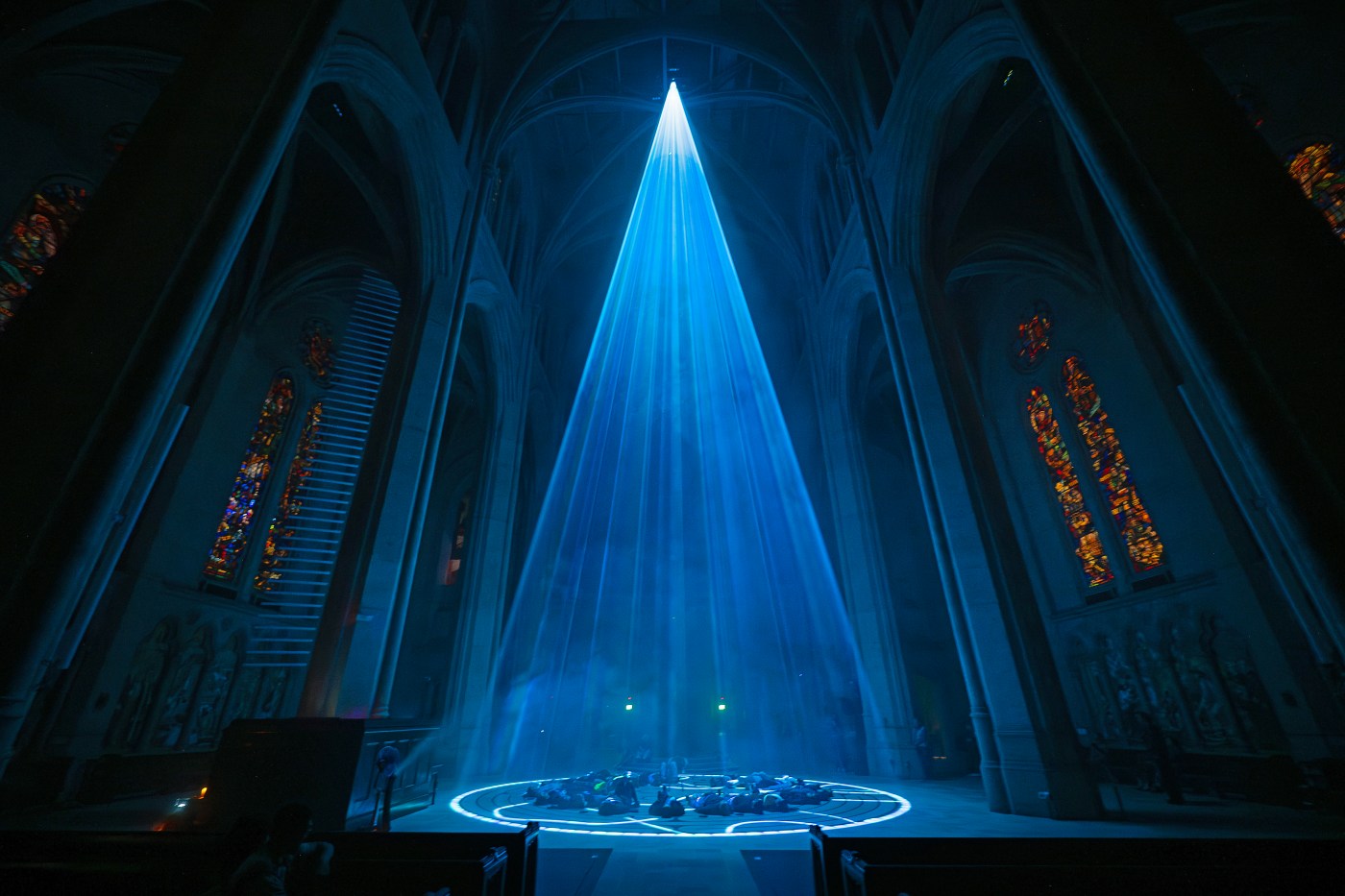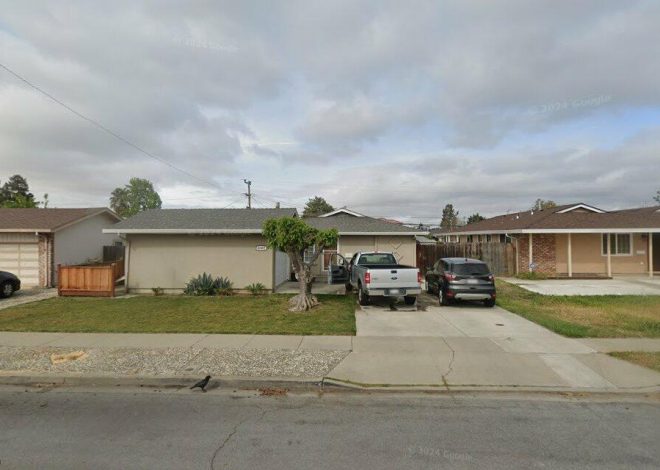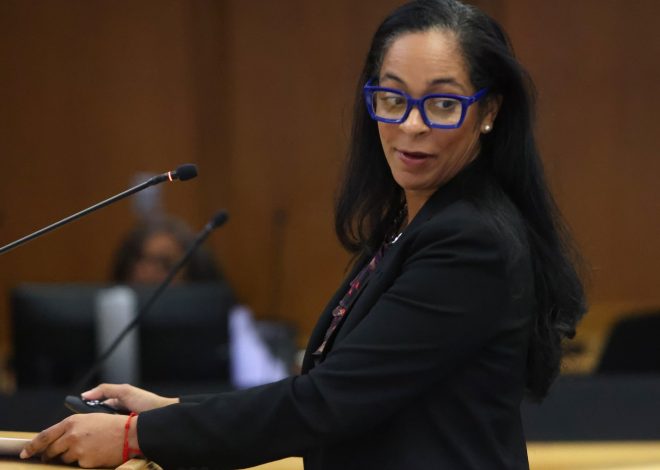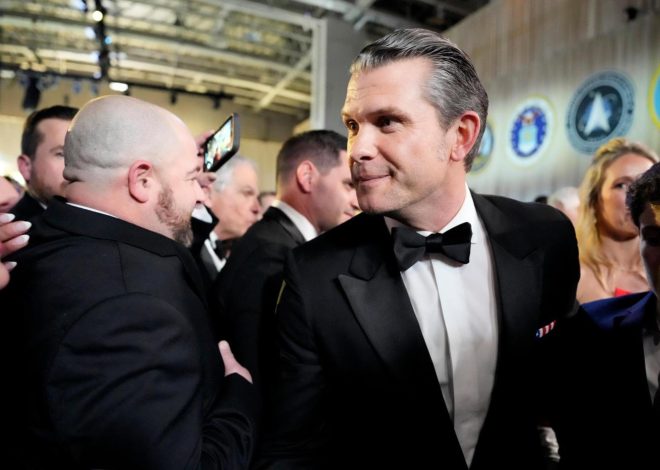
Sparkle and shine: Light-based art flourishes in the Bay Area
Two dozen people lie on the floor of San Francisco’s Grace Cathedral gazing into a cone of light shining down from a hundred feet above. They look up into radiance: shifting beams and curtains of blue and green, red, purple, yellow and pink, patterned with swirls and billows from manufactured fog. Deep, slow music evoking monasteries and whale song resounds among the church’s towering concrete pillars.
Experiencing the “Grace Light” art installation could be compared to gazing into the eye of God — or something like it.
Related Articles
‘Tunnel of smiles’: Burning Man sculpture dazzles downtown San Jose
‘Nightmare’ sculpture that won over some New Zealanders moves on to a new home
Trash art: A new show in San Francisco celebrates ordinary detritus
Mary Cassatt’s dazzling defiance on display at SF’s Legion of Honor
Euphrat’s new exhibit aims to capture ‘Glimmers’ of connection
“At the end, you almost felt like you were taken into the dome of heaven,” said San Francisco artist Pat Lee, 73, freshly upright after about 15 minutes on the cathedral floor. “I didn’t expect it to be so emotional.”
Appreciation of light unites humanity: sunsets gleaming through clouds, the face of a loved one in a candle’s glow, lasers glittering in a concert hall and the burst of fireworks in the night sky. In recent years, advances in technology and the influence of artists who ignite the night desert at Burning Man have brought artistic illumination into everyday life — sparking not just interest, but engagement and joy.
Grace Light, by Berkeley artist George Zisiadis and San Francisco composer Gabriel Gold, is just one of many light-based installations brightening cities and communities across the Bay Area. There are iconic, illuminated letter and word sculptures at San Jose’s airport and a winery in Santa Rosa. A giant woman made of steel and stars towers in San Leandro. To the south, a new geometric night-time wonderland has expanded Paso Robles’ spectacular Sensorio Field of Lights. And the biggest light installation of all, the Bay Lights project that lit up the Bay Bridge for 10 years until going dark in March 2023, is set to return in even more magnificence in 2025.
“Every origin story starts with light. It’s sort of at the genesis of every culture. It’s speaking a universal language that touches us at the core,” says Ben Davis, founder of Illuminate, the nonprofit behind Bay Lights, Grace Light and other large-scale works that fall into an artistic genre closely linked to the Burning Man festival of art, music and experience held each summer in Nevada’s Black Rock Desert.
Among the most prominent artists and artworks to emerge from Burning Man are Marin County’s Laura Kimpton and her Monumental Words sculptures, which have traveled from the desert to sites around the world. At San Jose Mineta International Airport, her “XO” helps turn arrivals into celebrations. At Santa Rosa’s Paradise Ridge Winery, her “LOVE” stands tall after barely escaping the devastating Tubbs Fire in 2017.
The XO sculpture by artist Laura Kimpton outside to Terminal B at the San Jose Mineta International Airport in San Jose, Calif., on Monday, Sept. 16, 2024. (Nhat V. Meyer/Bay Area News Group)
Kimpton launched the project, a collaboration with artist Jeff Schomberg, at Burning Man in 2010 with “MOM.” The next year came “OINK,” because Kimpton was farming pigs, and humans may need reminding that we’re animals, she says. The sculpture, installed far out near the Burning Man boundary fence, had external lights that flashed on and off.
“You could see OINK from five miles away, and it would go, ‘OINK, OINK, OINK,’” says Kimpton, 60.
Kimpton, of San Anselmo, started putting light inside her sculptures in 2016, when she found spotlights couldn’t properly illuminate the @ symbol in her “@EARTH#HOME” installation at Burning Man. “It drove me nuts,” she says. “I’m kind of a spastic artist who can kind of be messy and everything, but I’m a trained photographer: I like balance.”
For her “XOXO” the following year, the crew put light-emitting diodes (LEDs) inside the sculpture, “so that Laura doesn’t have a little fit,” she says.
Now, a version of that sculpture welcomes travelers and the friends and loved ones who come to meet them at the San Jose airport’s Terminal B. Twice the height of a person, “XO” represents the hugs and kisses ubiquitous at airports and changes color every few seconds, from red to green to blue and on through the spectrum, light shining through hundreds of bird-shaped cutouts in the sculpture’s aluminum sheeting.
“When you can change the colors of the piece, it makes a party, it makes an event,” Kimpton says.
Artist Charles A Gadeken, of San Francisco, is with one of his light installations called ” Entwined Meadow” at his studio in San Francisco on Monday, Sept. 9, 2024. (Jose Carlos Fajardo/Bay Area News Group)
Light, when built into art, also attracts. “It makes people look,” says Charles Gadeken, whose otherworldly “Entwined” sculpture garden illuminates San Francisco’s United Nations Plaza. “I get tired of seeing people ignore art. They walk past it. They don’t see it at all.”
At the plaza, eight of Gadeken’s chest-high techno-shrubs, plus one a bit taller, sprout from a sand-covered rectangle recalling the Black Rock “playa,” with the seedy chaos of nearby Market Street substituting for the kaleidoscopic madness of Burning Man. Each shrub features dozens of stalks topped with 3½-inch plastic cubes that glow, pulsate and switch colors: pink, chartreuse, orange, blue, white and purple. Every so often, some flash.
An illuminated enchanted forest by San Francisco artist Charles Gadeken titled “Entwined,” first debuted in Golden Gate Park in 2020. (Karl Mondon/Bay Area News Group)
“There are ways to use light art that really engage people,” says Gadeken, 60, whose path to artistic prominence also started at Burning Man. “The world could use some light. The cities have many dark places that could be illuminated and made more beautiful and made more fun.”
The Bay Area’s most-viewed work of light art, the Bay Lights that sparkled and shone from cables holding up the western span of the Bay Bridge, blinked to black in 2023, shut down after the lighting systems deteriorated in the elements and sea air. Illuminate’s Davis is working with local, state and federal authorities to bring it back in 2025 — and make it visible from the East Bay and Peninsula, instead of just San Francisco and Marin County, to deliver what Davis calls “aesthetic equity.”
A San Francisco fireboat rests on the waters off the Embarcadero as the Bay Bridge lights go on at dusk in San Francisco in 2019. (Ray Chavez/Bay Area News Group)
This project, too, arose from Burning Man, albeit indirectly. In 2010, Davis returned to the Bay after a week’s immersion in the festival’s culture of contribution, amid phantasmagoric structures ablaze with light. He had a hard landing back home in San Francisco. As he looked up at the Bay Bridge from The Embarcadero, inspiration struck: The generosity and beauty of the playa didn’t have to stay there.
“I just wanted to bring it to where we live and make it last longer and reach more people,” says Davis, 63.
Someone sent him a video of an installation by artist Leo Villareal at the San Jose Museum of Art. Davis called Villareal and asked him, “If the Bay Bridge was your canvas, what would you do?”
Villareal turned the span into a 1.8-mile long harp of light, the blinking white LEDs appearing to flow up and down in glimmering drops, with patterns sweeping sporadically across the lines of steel cables. He and Davis are again collaborating, aiming to set the span alight again in early 2025 with — they hope — an expansion from the original 25,000 lights to 50,000. If Davis can satisfy officials’ concerns around driver distraction, each of 300 cables will have white LEDs on both sides reaching as high as 240 feet above the bridge deck to create “The Bay Lights 360.”
“It won’t really be clear who gets the view and who doesn’t until we turn it on,” Davis says. “We’re doing our best to keep that view open to the entire Bay Area.”
A new brand of LED should dramatically increase the installation’s lifespan, Davis says.
Over the past decade, low-power, relatively cheap LED light has driven a world-wide expansion of light art, says Nancy Sweeney, an art consultant who curated the collection at The Ameswell hotel in Mountain View, where a mesmerizing work of LEDs, mirrors and fiberglass by artist Chul Hyun Ahn greets guests at reception.
But while art with built-in illumination grows in popularity and visibility, the need for maintenance and the potential for glitches or the deterioration that undid the Bay Lights give pause to many owners and operators of locations that host art, Sweeney says. Still, with advances in technology, “people are more willing to go there,” she says.
Increasingly reliable LEDs, along with evolving systems for controlling how they light up, are also creating a new wave of interest among artists, says Jia-Ming Day, a light artist and professor of New Media Art at Taipei National University of the Arts. He is studying light art in the Bay Area as a visiting scholar at UC Davis and began his U.S. studies at San Jose State University in 1992. Day, 59, believes this region’s residents will be seeing more light-based public art, often installed as a remedy to dark urban spaces.
Public appetite for captivating light art can be measured by the Sensorio “Field of Light” in Paso Robles. After flickering to life in 2019, the 15-acre, ground-level array of 100,000 color-changing spheres by artist Bruce Munro was to last about eight months. But it has drawn so many visitors to wander in awe among the orbs that it’s been expanded and made permanent. Now, a new light-art exhibit has popped up at Sensorio: “Dimensions,” a music-aided ramble among glowing metal geometric sculptures, the work of long-time Burning Man artists Serge Beaulieu and UC Berkeley graduate Yelena Filipchuk.
Back by the Bay, a stone’s throw from the San Leandro BART station, a 55-foot-tall sculpture of a nude woman rises from the city’s Tech Campus. Her toes are pointed, her back is arched, her head is tipped back, and her arms stretch toward the dome of heaven. An intricate labyrinth of steel tubing forms her skeleton. Beneath her steel mesh skin, she is lit from within by 2,500 LED lights that up close appear as pinpoints. From the BART platform, they look like stars, and from further away, they make her glow like a distant galaxy.
BART commuters can see the Truth is Beauty sculpture glowing at San Leandro’s Tech Campus across the street. The sculpture was created by artist Marco Cochranein for the 2013 Burning Man. (Jane Tyska/Bay Area News Group)
Built by Petaluma artist Marco Cochrane, Truth Is Beauty debuted in 2013 at Burning Man. Today, the sculpture brightens the darkness for many a tired commuter. “I like how it lights up,” says Shanea Espinoza, 31, a hostess at a nearby restaurant who takes BART home to Hayward after work. “It just adds a nice sparkle in the night.”
If You Go
Grace Light at Grace Cathedral at 1100 California St. in San Francisco is free (donations encouraged), and takes place on select evenings from January through April and September through November. Tickets are released at noon on the Tuesday before. Find details at http://gracecathedral.org/grace-light.


